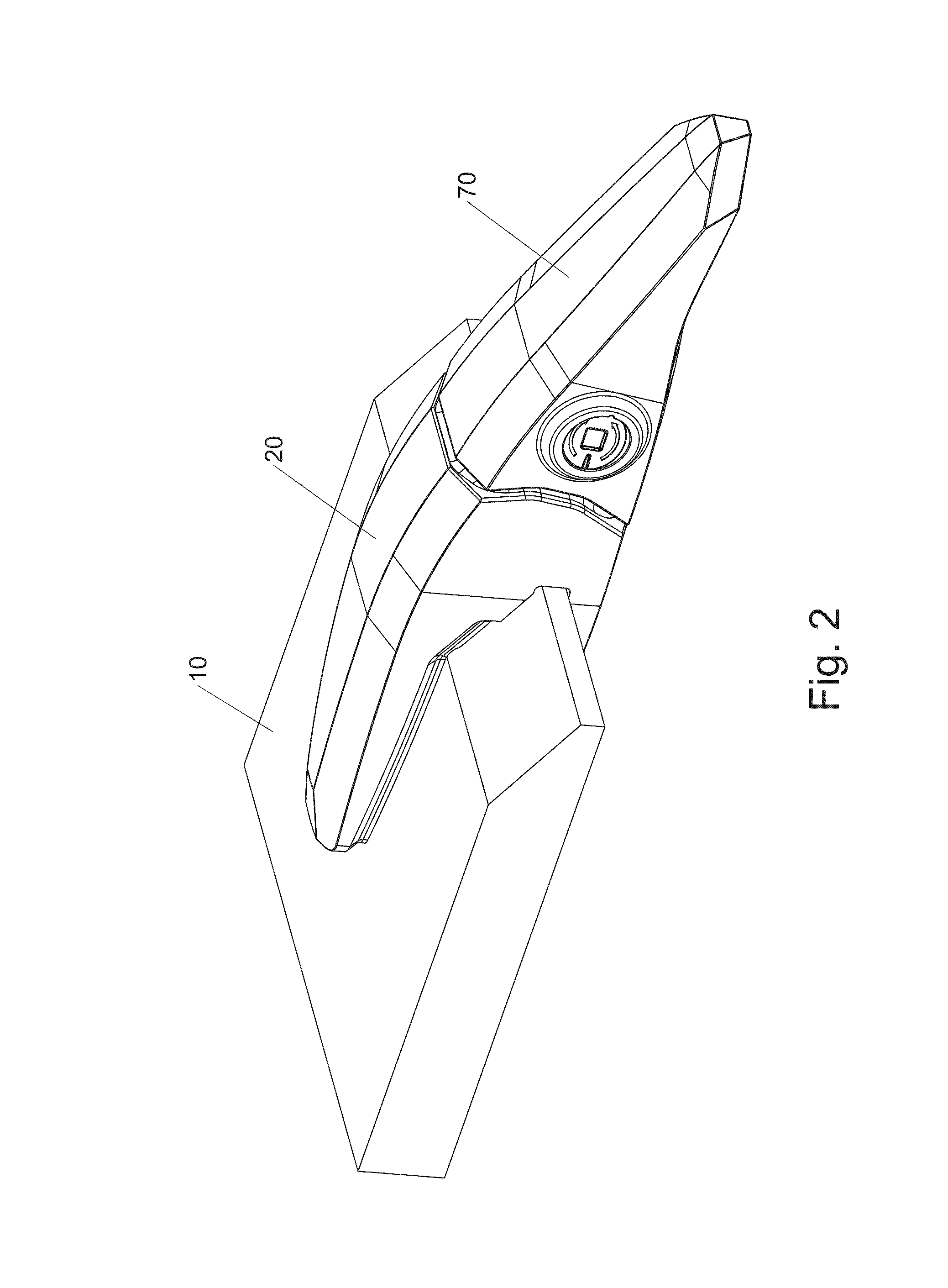Anchor
a technology of wearing elements and connecting parts, applied in the direction of soil shifting machines/dredgers, construction, etc., can solve the problems of weakening the adaptor, affecting the ability to adjust or tighten the connection, and affecting the use of excavating equipmen
- Summary
- Abstract
- Description
- Claims
- Application Information
AI Technical Summary
Benefits of technology
Problems solved by technology
Method used
Image
Examples
Embodiment Construction
[0086]Referring to the Figures, FIG. 1 shows a portion of a lip 10 of an excavator bucket, onto which is located an adaptor 20. A tooth 70 is shown ready for attachment to the adaptor 20.
[0087]The adaptor 20 has a body part 21; a nose 22 extending forwardly of the body part 21 onto which the tooth 70 can be located, and two legs 24 extending rearwardly of the body part 21 about the lip 10.
[0088]The nose 22 can be more clearly seen in FIGS. 3 and 4. It has a front wall 26, a top 28, a first side wall 30, a bottom 32, and a second side wall 34. The top 28 and the bottom 32 each extend from the body part 21 to the front wall 26. The top 28 and the bottom 32 are not parallel, but are generally angled towards each other such that the nose 22 reduces in height towards the front wall 26, with the front wall 26 being about half the height of the body part 21.
[0089]The first and second side walls 30, 34, each extend from the body portion 21 to the front wall 26. The first and second side wal...
PUM
 Login to View More
Login to View More Abstract
Description
Claims
Application Information
 Login to View More
Login to View More - R&D
- Intellectual Property
- Life Sciences
- Materials
- Tech Scout
- Unparalleled Data Quality
- Higher Quality Content
- 60% Fewer Hallucinations
Browse by: Latest US Patents, China's latest patents, Technical Efficacy Thesaurus, Application Domain, Technology Topic, Popular Technical Reports.
© 2025 PatSnap. All rights reserved.Legal|Privacy policy|Modern Slavery Act Transparency Statement|Sitemap|About US| Contact US: help@patsnap.com



